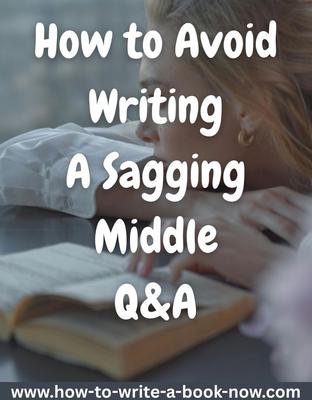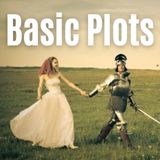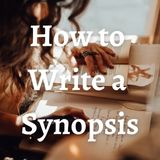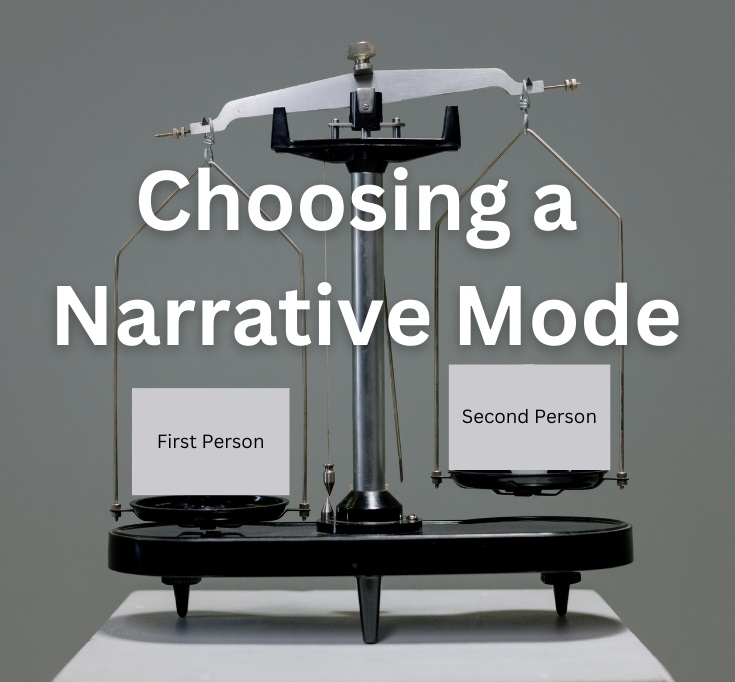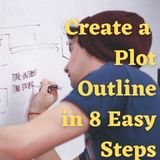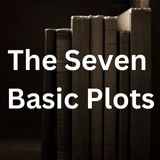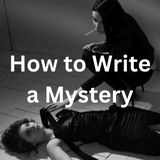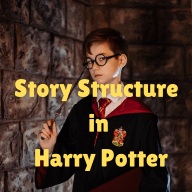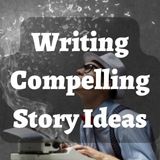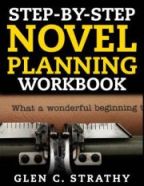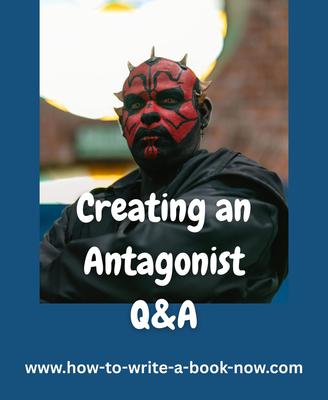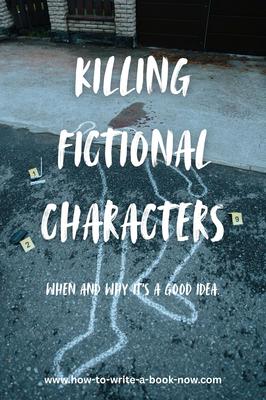Sagging Middle Syndrome
Question: I've read almost every article here and I still can't seem to get an interesting middle. I have a beginning and end. But have no idea how to get from the beginning to the end! I've gotten to a certain point and it was kind of marking the end of the beginning and the beginning of the middle and I have no idea where to go from there to get to the end of my story. Also, it's a romance novel. I have my goals and consequences and basically everything to get me to the end except an exciting middle and I have read the sagging middle syndrome about ten times now and I am still as hopeless as I was before I read it.
Answer: One approach is to develop all four of the major throughlines, so the middle of the book will be filled with events that are crucial to the development of arcs that are important to the story.
If you are using a 4-act structure, then your middle will be acts 2 and 3. Each of the four throughlines will have a body of material to be explored in act 2.
Overall Throughline: At the end of act 1, a turnng point should have set your characters on the road towards achieving the story goal. Act 2 is where things get complicated. The challenges and conflicts rear their heads for the first time. It starts to become clearer what's at stake and what must be done to achieve the story goal.
Main Character Throughline: You should have established who your main character and how she does things is in act 1. Act 2 is where she starts to be pressured to change. She faces situations where it's not clear if her usual approach is going to work.
Impact Character Throughline: In a romance, the impact character is the love interest. You should have introduced him in act 1. In act 2 his influence on the main character grows as he shows her a different approach, a different way of being or doing things. In some cases, he opens up a whole new world to her.
Relationship Throughline: You established the initial relationship between the two leads in act 1 (friends, enemies, reluctant partners, etc.). Now the relationship moves in a new direction. Often they become more romantically involved at this stage. Or, if they started off as lovers, their relationship may be tested in act 2. Their feelings towards each other may get complicated at
If you structure the second act of each throughline as a sequence of events (3 or 4), each with its own inciting incident, complication, crisis, and resolution, (or perhaps purpose --> conflict --> resolution) that should give you 12-16 events in act 2. Enough to fill quite a few pages.
If you plan to have any subplots, they will have their own act structure, and you may want to include part of each subplot in this act as well.
You may also have some events that are there to illustrate thematic issues. Each throughline can have it's own conflict between opposing values, and theme scenes can present evidence as to which values should be more highly regarded.
Act 2 should end with another major turning point. This is sometimes thought of as a "point of no return." After this turning point, the main character is fully committed to the quest to achieve the story goal. Act three is the march to the overall story crisis - a major setback that marks the start of act 4.
In act 3, all 4 throughlines build towards their own crisis, using a sequence of events (just as in act 2).
So in addition to the overall throughline crisis (the major setback in the effort to achieve the story goal), you may have...
The main character's personal crisis: The pressure on her builds to the point where she is forced to decide whether to abandon her old approach and take on the impact character's approach, or to stick with her old approach. Only the right choice will let her achieve the story goal, but she has no way of knowing for certain what the right choice is.
The impact character's crisis. His personal story reaches its own crisis where either he does something or something happens to him that has the greatest influence on the main character.
The relationship crisis (also known as the "black moment"). Their relationship experiences a major setback which looks impossible to recover from (until it does in act 4).
If you use a sequence of events to build towards each of these crises, that should give you another 12-16 events in act 3 (more or less depending entirely on your choices). Including all four crises as separate events makes for an exciting third act.
Subplots, theme scenes can continue to appear in act 3, naturally.
The end of act 3 marks the end of "the middle" and the beginning of the march towards the final resolution.
Hope that helps.
The Middle of my Story?
by Arianna
(Baltimore, MD, USA)
Question: I'm writing a story right now and I've just started a complete rewrite that was badly, badly needed. Now that I'm looking over my book, though, I'm beginning to feel a little bored with the storyline. There's certainly a lot of action and a lot of emotion, but the middle of my story seems to me a bit... I don't know, lacking, somehow.
Maybe it's just my own hunger for excitement and thrills. :D
But I want this book to be action-packed and entertaining, so I need to know here which plot you think sounds more enticing (from a reader's perspective).
PLOT ONE- In the first plot, the one with which I went originally, the MC (7-yr-old kidnappee) ran away from her kidnapper's apartment one night to stay with a character who is very important to the story throughout. (I know this plot sounds unrealistic, but I've arranged the circumstances so that really, it isn't.)
PLOT TWO- In the alternative plot, the one I'm contemplating putting into affect, the MC still ends up running away but this time she finds herself clinging to a street family (they're becoming a very common inner-city thing now, and for whatever reason, they inspire me) before finally reuniting with that previously mentioned background character.
Please help! I'm leaning toward the second plot, but I'm not sure if that sounds too confusing or if there's something else that might draw a reader away.
Thank you for any responses I receive! I'm so grateful! :)
Question: Middles have been a challenge for most writers since probably the invention of stories. Yet they are also necessary, since without them, the resolution would be too easy.
I don't know how much planning you have done, but I hope you have at least worked out a 4-act structure (setup -> complication -> move to crisis -> resolution). If not, do look at some of the articles and Q&A on my site because I do talk about this. That same 4-part structure can be applied to each subplot, throughline, act, sequence, scene, etc.
You should know where your story is going, how it will end, and how the main character will resolve her inner conflict. (Will she change or remain steadfast? If she changes, how will she change? Will the story goal be achieved?)
As for your two choices... I'm going to guess that, since she is running away from her kidnapper by the start of act 2, the person/people she stays with are going to have an impact on her. One of them will be the impact character who offers her an example of a different way to handle problems or pressures her to change. She may have even seen this person before (at a distance perhaps). This person's influence on her grows and is instrumental in determining the choice she makes at the climax and whether the story goal is achieved.
So what you have to ask yourself is which character is in a better position to offer the MC an alternative approach. If she will change in the end, who can offer her what she needs to change and grow? If she must remain steadfast to win, who can tempt her to take the wrong path?
Only you can figure this out , because only you know your character. But that is the key.
Watching the character get tempted to take a different approach, seeing her wrestle internally over what do so, watching her relationship with the impact character progress... this will help keep your reader (and you) interested.
One other note... if you're feeling bored with your story, the reader will be bored too. So make the story awesome. Make it something that moves you. Experiment with different ideas until something clicks and you get excited again. Usually, it's a case of strengthening the emotional landscape of the story, either by tightening the overall plot or the arc of the main character's growth, or one of the other throughlines. Make sure every event in the story is a necessary part of one arc or another. Don't have events or scenes that are just filler.
Best of luck.
Comments for The Middle of my Story?
|
||
|
||
Avoid Writing a Sagging Middle....
by Christian
(Montreal)
Sorry if my question is very long but i need to write my thoughts out to formulate my questions correctly. I think I'm writing fantasy by the way, and I want to avoid writing a sagging middle.
Simply put I have the story's broad strokes in my head, have a good idea of where I want it to go but am worried about keeping the reader's interest alive between the beginning of the story (where some characters and goals are presented) and the end (where climactic events unfurl.)
I know that before reaching the end of the story where that climactic end is supposed to happen, my characters have to evolve on many levels in order to be appealing to the reader ( and to me) but also believably strong enough to rise to the challenge presented to them. So when I look at that middle problem I'm thinking of presenting sub-stories/ challenges but on a smaller scale.
When I look at the problem it makes me think of Russian dolls.....like the main story is the biggest doll but inside it are many other smaller dolls without which the story becomes shallow.... so my question is :
These smaller dolls, do they always, systematically have to relate to the or be linked to the bigger one (the main story). As long as I write a chapter that helps the reader understand the character better, either through tragedy, romance, humour, etc. can i more or less "take a break" of sorts from the main intrigue of the story? Or should every single smaller scale story be a clue to the main story ?
My worry is that the reader might think <
Like everyone else I will start offer my thanks for the time you put into this site, the explanations and answers you give. I also appreciate how you actually never tell us what to do and give advice and suggestions instead, pointing out that our stories are our own creations and we ultimately always know best where to go with them.
Answer: First, thanks for the kind comments. I'm glad you're finding this site useful.
As for your question...
There are two basic types approaches to plotting stories outlined in Dramatica.
The first, which is more plot-oriented, is based on a four-act structure. You have four throughlines: your overall story, your main character's arc, the impact character's arc, and the relationship arc. Each of these is divided into four stages or signposts - the set-up, complication, crisis, and resolution. Act one contains the first signpost of each throughline, act two the second signposts, etc.
In a longer work, these signposts are broken down into sequences of events, so that each signpost has its own beginning, complication, crisis, and resolution.
Even though this approach includes the external, internal, and relationship conflicts, it is a very plot-oriented approach because each event in a throughline leads into the next in a very tight cause-and-effect chain.
The other way to structure a story is to take a theme-oriented approach, which is generally a three-act structure. With this method, the signposts are reduced to single events. The bulk of the story consists of the journeys from one signpost to the next. Act one is the journey from the signpost #1s to the signpost #2s. Act 2 journeys from the signpost #2s to the signpost #3s, etc. And these journeys are explorations of themes.
For example, you might take two opposing values you want to weigh up, such as self-confidence vs self-doubt.
Then you take two opposite ways of looking at these values, such as objective value vs. subjective worth.
Next you create 6 sequences, one to illustrate each of the following questions:
1. Which is better: self-confidence or self-doubt?
2. What is the objective value of self-confidence?
3. What is the subjective worth of self-confidence?
4. What is the objective value of self-doubt?
5. What is the subjective worth of self-doubt?
6. Which is more important, objective value or subjective worth?
Each of these 6 questions can be explored in a sequence of 3 or 4 events. You put two theme sequences into each act.
Each throughline will have its own issue and counterpoint to explore, so that gives you 8 sequences in each of the three acts.
This is a theme-oriented approach because the sequences are related to each other in that they are exploring related issues, but they are not linked to each other by cause and effect. The signposts and other plot elements are still present, so there is a plot, but there is less emphasis on it.
My feeling is that theme-based plotting is best for decision stories, such as literary fiction or romance. Stories where the turning points are key decisions require more weighing up of issues in order to make those decisions, so thematic sequences are more important.
Plot-based plotting is best for action stories such as crime, war, or adventure where the challenge lies in the doing not the deciding.
Of course, it depends too on your audience. There are holistic thinkers and there are linear thinkers (or as the philosopher Alan Watts used to say, there are pointy people and gooey people). Holistic people lean towards decision stories and linear people lean towards plot and both have a hard time understanding the other's preferences.
I hope that doesn't complicate things too much. The danger with theory is that the more complicated it gets, the more it slows you down. It's best to just take the parts that spur you to action and not worry about the rest.
Comments for Avoid Writing a Sagging Middle....
|
||
|
||
Filling in the Middle
by Layne Tanner
(Henniker, NH)
Question: I have a story idea with three MC's, and I know how it starts out, and I know how it ends. However, I cannot find any conflicts that make sense to lead the characters from the beginning I have chosen to the end I would like to achieve. I am having a lot of trouble since most of it is a voyage, but even aside from that the subplots and main points of the plot are missing. I have no idea how to get my characters from point a to point b. I know the start and end, but I've got nothing for in between! How can I brainstorm those events?
Answer: First, have you checked out the articles on the "Write a Novel" tab? Also the article on "Sagging Middle Syndrome," under "Fiction Tips"?
Assuming you already have, here are some thoughts...
First, you say you know how you want the story to end. How do your main characters want it to end? Do you know what they are hoping/trying to achieve? What would satisfy them?
Obviously, if they have everything they want at the start, there's no story.
So let's assume one of your characters or perhaps all of them wants something - either to fix a problem or achieve something. But something stands in his/her way, which is why the want is unsatisfied at the start.
Now, apply the 8 elements of plot.
What would be the consequence if the goal isn't achieved?
What is required for the goal to be achieved? What must the characters do?
What happens that suggests it might not be achieved?
What conditions make the goal hard to achieve?
What must the MC get in order to achieve the goal?
What costs or dividends might occur along the way?
List as many ideas as you can.
What does the main character or characters do at the climax that determines once and for all whether or not the goal will be achieved and what the ending will look like?
Since you have several main characters, they will all have personal goals in addition to the overall story goal.
Brainstorming these questions should give you a lot of material.
Consider character functions too. Who doesn't want the goal achieved? (Maybe it's not a "who" but a "what" that is the source of the conflict.) Who wants to help? Who wants to hinder? Who supports? Who opposes? Who stays focused? Who looks at the big picture? Who takes a logical approach? Who goes on gut feeling? And how will you illustrate all this?
That's a lot of activity with which to flesh out the story.
Obviously, the first part of your story will revolve around the events that propel your characters to embark on their pursuit of their goals. The second part will be about the complications, the problems and challenges they encounter along the way that make the goal look less likely to be achieved. The third part is the climax, where they are forced to do something that determines the outcome, and the fourth part is where we see the consequences, the outcome, of their efforts.
That's a lot to think about, and it will take you a little time to work out. But once you have settled on the major events you can put them in order leading up to the climax. That will give you a roadmap to follow.
Comments for Filling in the Middle
|
||
|
||
|
||
|
||
- Home
- Plot Questions
- Filling in the Middle
